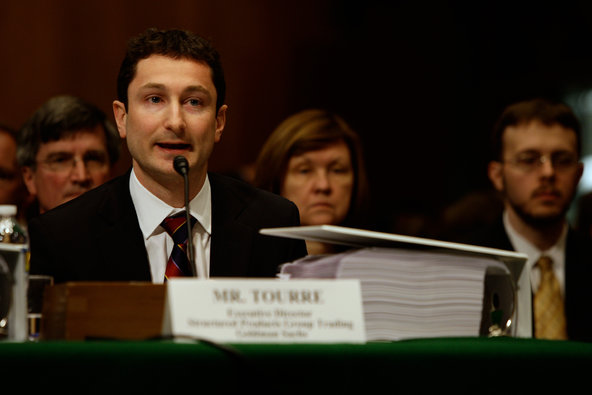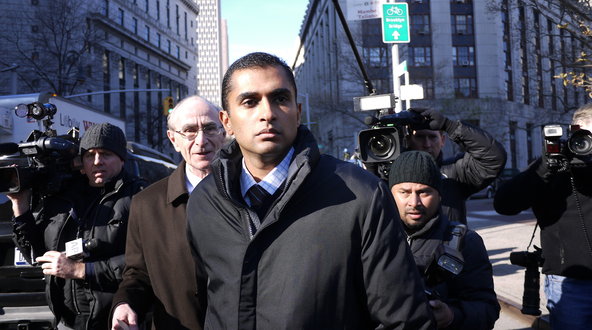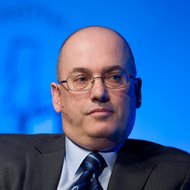The firm said it spends “tens of millions of dollars,” on compliance, “deploys some of the most aggressive communications and trading surveillance in the hedge fund industry,” has hired big-name lawyers like Peter Nussbaum and Steven Kessler to oversee compliance, and has a staff of “no fewer than 38 full-time compliance personnel.”
Which sets up the question: What were they doing?
On Thursday, the federal government charged SAC with running an insider trading scheme that flourished from 1999 to 2010, the result of an “institutional indifference” to unlawful conduct. On the face of it, it’s impossible to reconcile SAC’s avowed devotion to both legal and ethical behavior and the government’s allegations.
It may be true, as SAC concedes, that even the best compliance programs “may not detect individuals determined to evade firm policies or break the law.” But that doesn’t explain the insider trading “on a scale without known precedent in the hedge fund industry,” as the government put it, which already includes guilty pleas by five employees, insider trading indictments of two more, and SAC’s own settlement of Securities and Exchange Commission charges for $616 million, the largest insider trading penalty ever.
Whether the elaborate compliance system at SAC was little more than a Potemkin village will be at the center of both the S.E.C.’s civil enforcement against Steven A. Cohen, SAC’s eponymous billionaire founder, for failure to supervise his employees, and this week’s criminal indictment against the firm. (Mr. Cohen hasn’t been charged with any crime.) As Harvey Pitt, the former S.E.C. chairman, told me this week: “When it comes to compliance, you have to live, eat, breathe and drink it. It has to be embedded in a firm’s DNA.” And that process, he emphasized, had to start at the top, with Mr. Cohen.
SAC maintains that’s exactly what both the firm and Mr. Cohen have strived for, and that “Mr. Cohen himself exemplified” that “compliance is the responsibility of all of its employees.”
Such an effort, SAC said, began with its hiring process. The “firm does not take lightly its decision to employ someone,” it said in a document responding to an S.E.C. action last week contending that Mr. Cohen failed to supervise SAC’s employees. The firm said it refused to hire candidates because of concerns about compliance issues. When I asked for an example, the firm declined to identify any.
But the government cited multiple examples of SAC employees who were hired precisely because of their purported “contacts,” including one who “has a share house in the Hamptons with the C.F.O.,” or chief financial officer, of a publicly traded company and is “tight with management” at the company, as one internal SAC e-mail enthused. Another prospect was praised for “mining his industry contact network for datapoints.” The government said SAC rarely, if ever, showed any interest in ethics, integrity or compliance in vetting candidates.
On the contrary, when SAC’s legal department raised objections to hiring Richard Lee after another hedge fund warned that he was part of an “insider trading group,” Mr. Cohen “decided to hire Mr. Lee anyway,” and overruled the legal department, the indictment contends. Mr. Lee began insider trading almost as soon as he was hired. (Mr. Lee pleaded guilty this week to conspiracy and securities fraud charges and is cooperating with the government’s investigation.)
SAC has also stressed its continuing training programs, which include requiring employees to certify their adherence to a compliance manual and attend sessions with “prominent outside speakers.” These included Mr. Pitt, who is now chief executive of Kalorama Partners, a consulting firm that advises clients on compliance issues; and Stephen Cutler, a former chief of enforcement at the S.E.C. who is now general counsel at JPMorgan Chase, who spoke to the employees while in private practice. Mr. Cohen himself was “an active participant in this process,” SAC said.
But not all that active, apparently. Mr. Cohen didn’t bother to attend all the lectures, according to participants, although he did meet with the speakers individually.

Article source: http://www.nytimes.com/2013/07/27/business/at-sac-rules-compliance-with-an-edge.html?partner=rss&emc=rss











